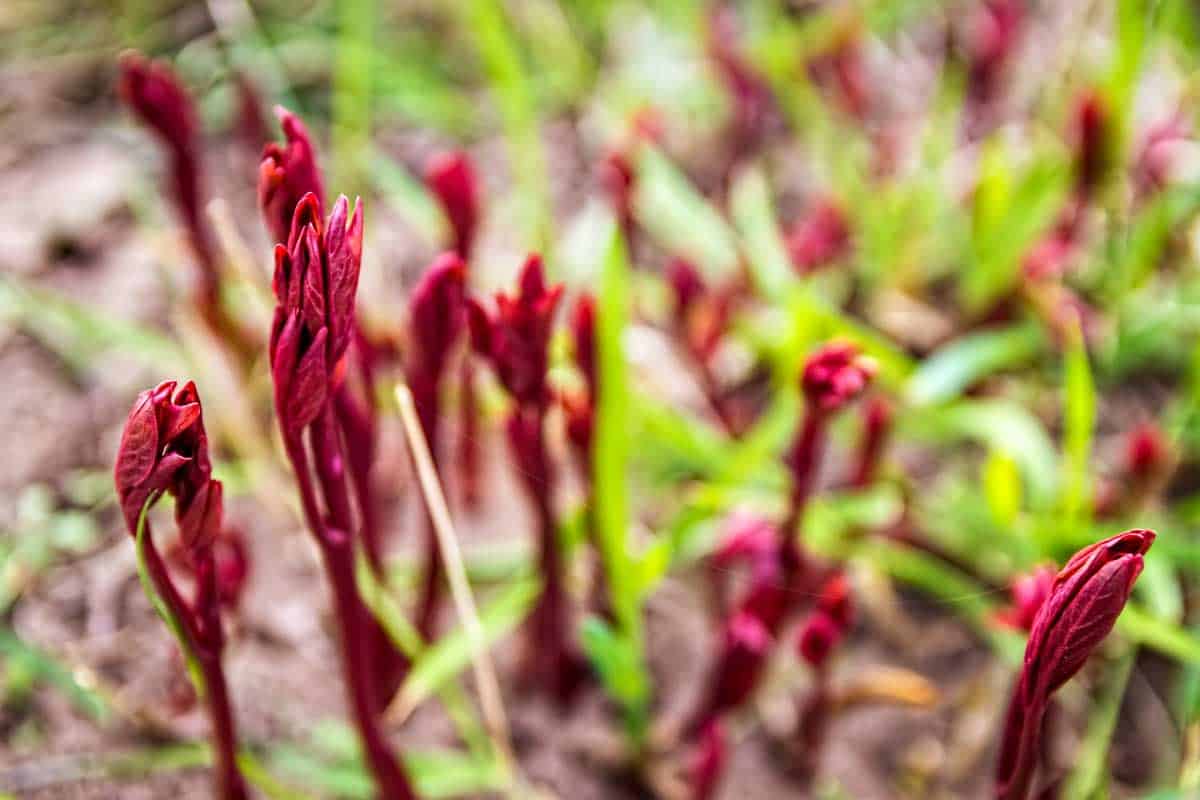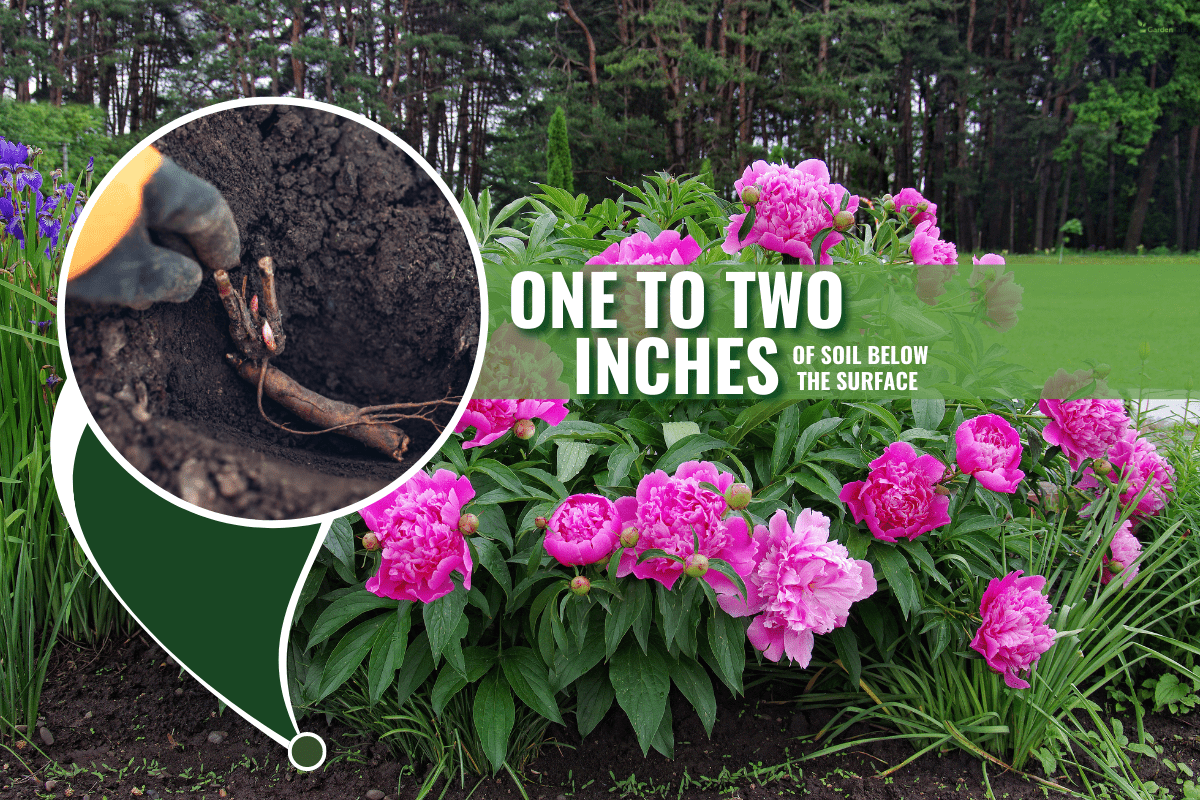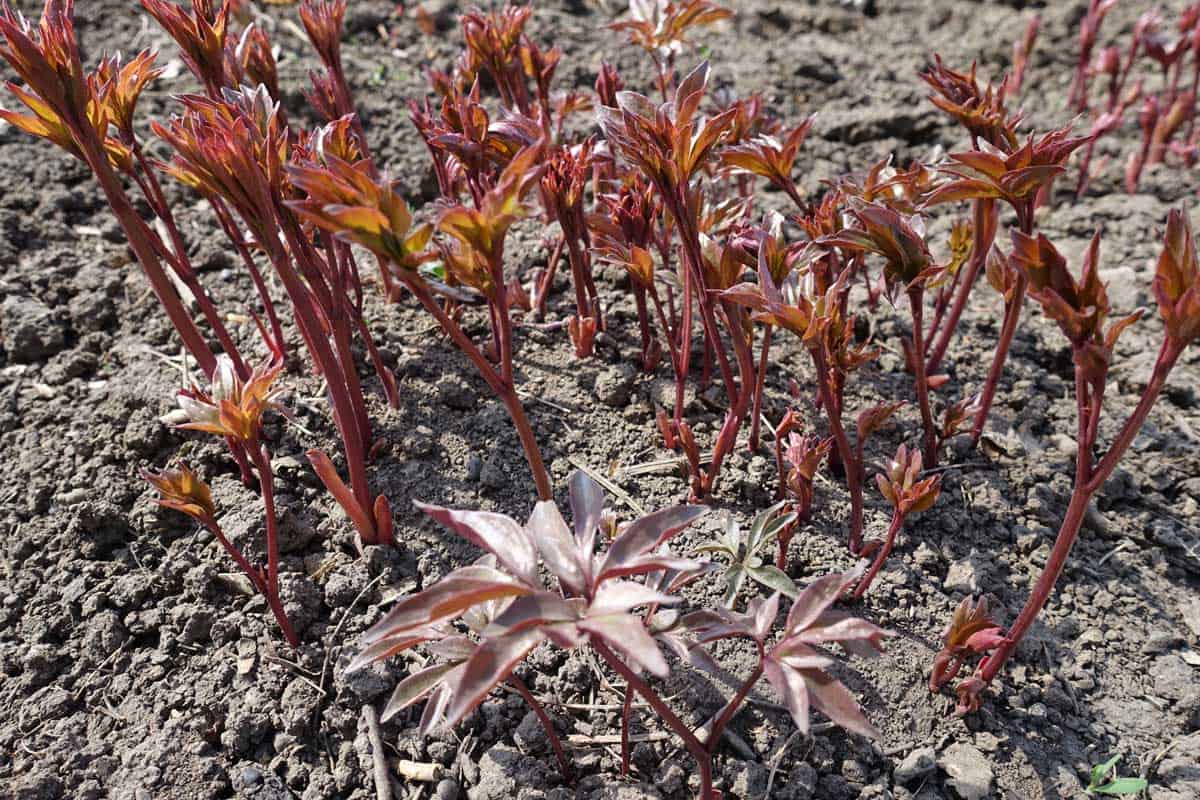Peonies, cherished by gardeners worldwide, are known for their timeless beauty.
They are an old-fashioned floral favorite among gardeners, especially in Europe, Asia, and North America.
Their beauty is only matched by their stubborn nature. Once they’ve taken root, they do not like to be moved.

Therefore, if you choose to transplant them, you must do so very carefully at a specific time of year.
This ultimately begs the question, ‘when is the best time to transplant peonies?’
This guide will explore the reasons behind transplanting, the proper timing, technique, root depth, chances of re-blooming, and the longevity of these flowers.
Ready to learn the ins and outs of peony transplantation? Let's begin!
Why Should You Transplant Peonies?
Consider transplanting your peonies if they're not receiving sufficient direct sunlight.
The growth and health of your peony plants can be compromised as trees, shrubs, and neighboring plants mature and shade them.

Another reason to transplant may arise during garden renovations when you need to redesign your planters.
In such cases, uprooting and relocating your peonies becomes necessary.
Alternatively, if your peonies were originally planted too closely, causing them to overcrowd as they mature, transplantation is also essential.
When to Transplant Peonies?
The best time to transplant peonies is in the fall after the flowers have died back and before the ground freezes.
September is an excellent month to do so, especially if your peony plants are well-established.
But if for some reason you need to move them around springtime, you might be wondering whether it's still feasible.
Yes, it is possible to move peonies during spring but know that the plant has a tendency to be stressed during this time.
You need to do it properly and carefully if you want the peonies to survive.
If you choose to transplant peonies in the spring (which is between March to May) you must do it just as you see new growth coming from the plant.
Be sure to dig the entire root ball carefully and replant it immediately.
If you transplant it during spring, do not expect it to bloom at the expected time. It may take a while for it to adjust.
Here's a tip if you're wondering where is the best place to replant them: Where To Plant Peonies For Getting The Best Results?

How to Transplant Your Peonies
As peonies are finicky and don’t like to be moved once established, you must use caution when transplanting them from one location to the next.
Luckily, for the most part, this is a job that only needs to be done once every ten to fifteen years. The steps for transplantation include the following:
1. Choose the Location
In the fall (around September), choose a spot that gets at least six hours of full sun per day.
2. Prepare the Soil
Prepare the ground in the chosen area (with manure or compost) by loosening the soil about eighteen inches down and working fertilizer throughout.
3. Clip the Stems
Clip the leafy stems of the plant to almost ground level – approximately two or three inches high.
Use a clean, sharp knife and dig underneath the peony clump, about a foot or so away from the stems.
4. Dig Up the Roots
Dig up the plants carefully, paying close attention not to cut or damage the roots.
Remove the foliage gently from the uprooted plants.
Wash the soil off near the roots using a gentle flow from your garden hose.
Take a clean, sharp knife and divide the plant’s crown, making sure each section has three to five buds or healthy stems attached.
5. Replant
Plant each division at least three feet apart, as peonies require plenty of air circulation to grow and thrive.
Place divisions in a pre-dug hole with the soil level no more than two inches above the buds near the roots, as peonies planted too deeply will not bloom.
6. Water
Water the transplants well and then continue to water once a week until the ground freezes.
Add a few inches of mulch around the new transplants in late fall to prevent them from heaving when the ground freezes and thaws.
How Deep are Peony Roots?
The depth of peony roots is dependent not only on the size of the plant but where it’s located.
Peonies growing in a planter rather than in the ground will have shorter roots based on the size of the pot.

It’s imperative not to plant peonies in too-deep soil, as they won’t bloom or grow properly.
It’s recommended to plant peonies in a hole or planter with no more than one to two inches of soil below the surface.
The soil should also be fertilized before planting with a mound of dirt and mulch added to the top to compensate for any settling that may occur.
Will Peonies Bloom After Transplanting?
Most peonies do well after transplanting, provided you do it in the fall when the flowers have died down, and the ground has yet to freeze.
The following spring, you may notice limited growth, but that’s to be expected.
Transplanting is stressful for plants, especially peonies. During the second year, you should see a marked improvement in your peony plant’s development.
By the third and fourth years, the plant should make a complete recovery, and flowers will likely be in full bloom once again.

How Do You Get Peonies to Bloom Again?
If, after transplanting, you notice your peonies aren’t blooming as they used to, try cutting back their stems slightly at an angle directly above any buds that are facing outward.
Or, you can cut them all the way down to the ground if there is little to no new growth.
The flowers should return, hopefully, the following spring or the year after.
Just be sure to cover the crown with soil and mulch in the fall to protect the plant during the harsh winter months.
For more information, check out our post on When to Cut Back Peonies.
Do Peonies Only Bloom Once?
Sadly, for as beautiful as peonies are, they have a relatively short lifespan each year – only a week to ten days
The good news, however, is that the flowers blossom at different times throughout the growing season so that you can enjoy their fragrant beauty from late spring (April) through early summer (June).
Transplanted peonies may blossom for only a few days and then fall off.
The good news is, if they’re handled with care during the transplanting process and properly re-root themselves, they can live for up to one hundred years!
Transplant Peonies in September!
Transplanting peonies at the right time not only strengthens their root systems but also sets the stage for an impressive display in subsequent seasons.
To recap, the ideal time to transplant peonies is during the fall, especially during the month of September, when they are dormant and less susceptible to transplant shock.
By carefully considering the plant's natural lifecycle and following the steps detailed in this article, gardeners can ensure their peonies are positioned for success in their new locations.
Remember, patience and proper care are fundamental; with time, your relocated peonies will reward you with their lush, fragrant blooms, making every effort worthwhile.
Read more here:
How to Grow Peonies: The Complete Guide
Tree Peonies: Gardening Tips, Photos and More


This was a 2020 Covid life saver post for my North TX Peonies!! History: My peony had been in the ground for about 15 years. In 2017, I made a mistake and planted Carolina Jessamine vine along a wrought iron fence – blocking some of their sun. Then also, I mulched them -Like 2 inches of mulch. Wrong move. Result: Healthy shiny green leaves but no blooms for 3 years.
So during COVID Oct 2020, I decided to roll the dice and dug them up – and separated it into 6 plants. Moved them away from the Jessamine and along pool edge – and more sun. I BARELY buried the crowns. Gave them good compost/dirt and went away and prayed.
Then – the TX storm from the century came thru. Guess what! Those peonies didn’t give a hoot – they all survived and are budding and blooming. My first flower is in a vase in my bedroom and was so heady I had to move it!
September here in Hertfordshire,UK. This came just in time for me as I am contemplating moving a peony to a better place. Very useful information, thank you.
My husband’s dog has become obscessed with my Itoh peonies. He has eaten all the buds off and is now attacking all the leaves! What in the world? I have put up fencing and he destroys fence to get in and eat them! I swear he knows that they mean slot to me…my mom sent me money every Mother’s Day to add to my collection…Itohs are very expensive!